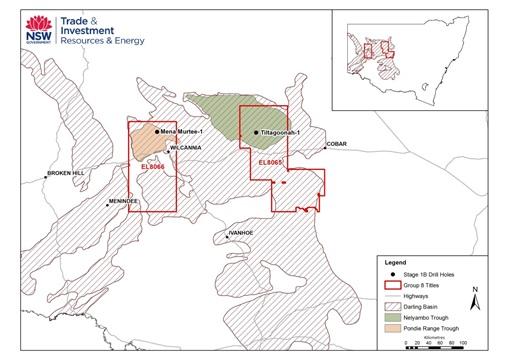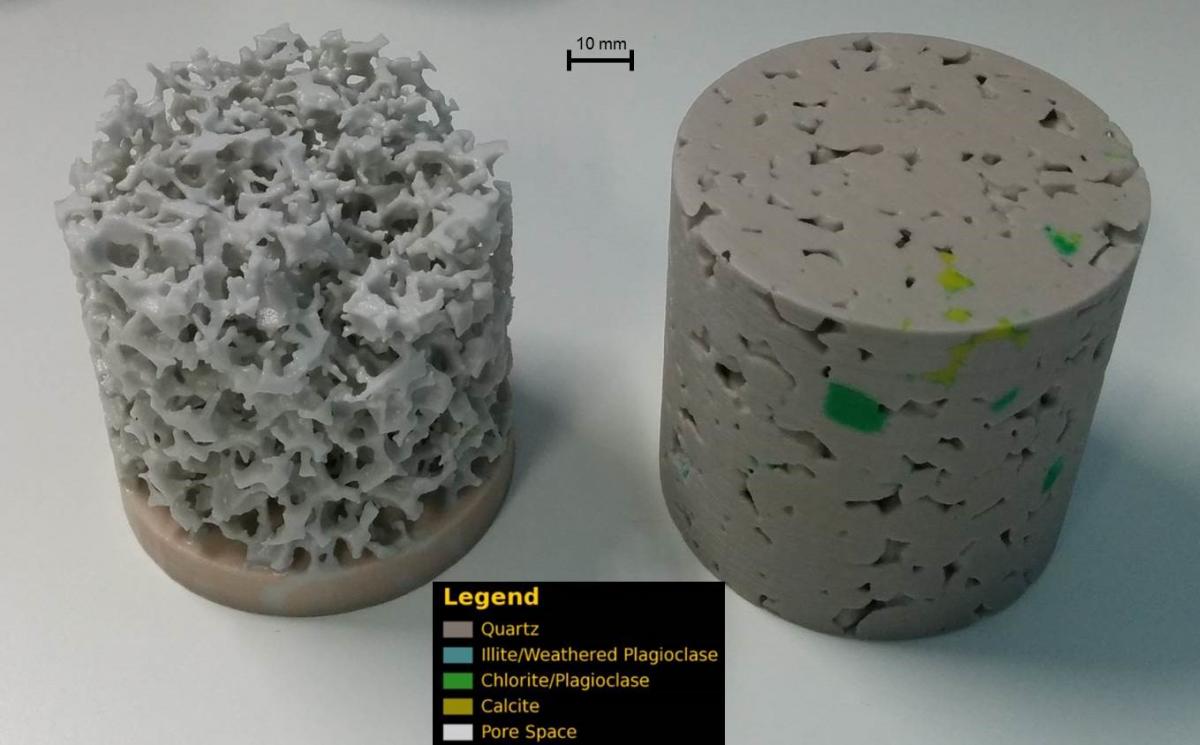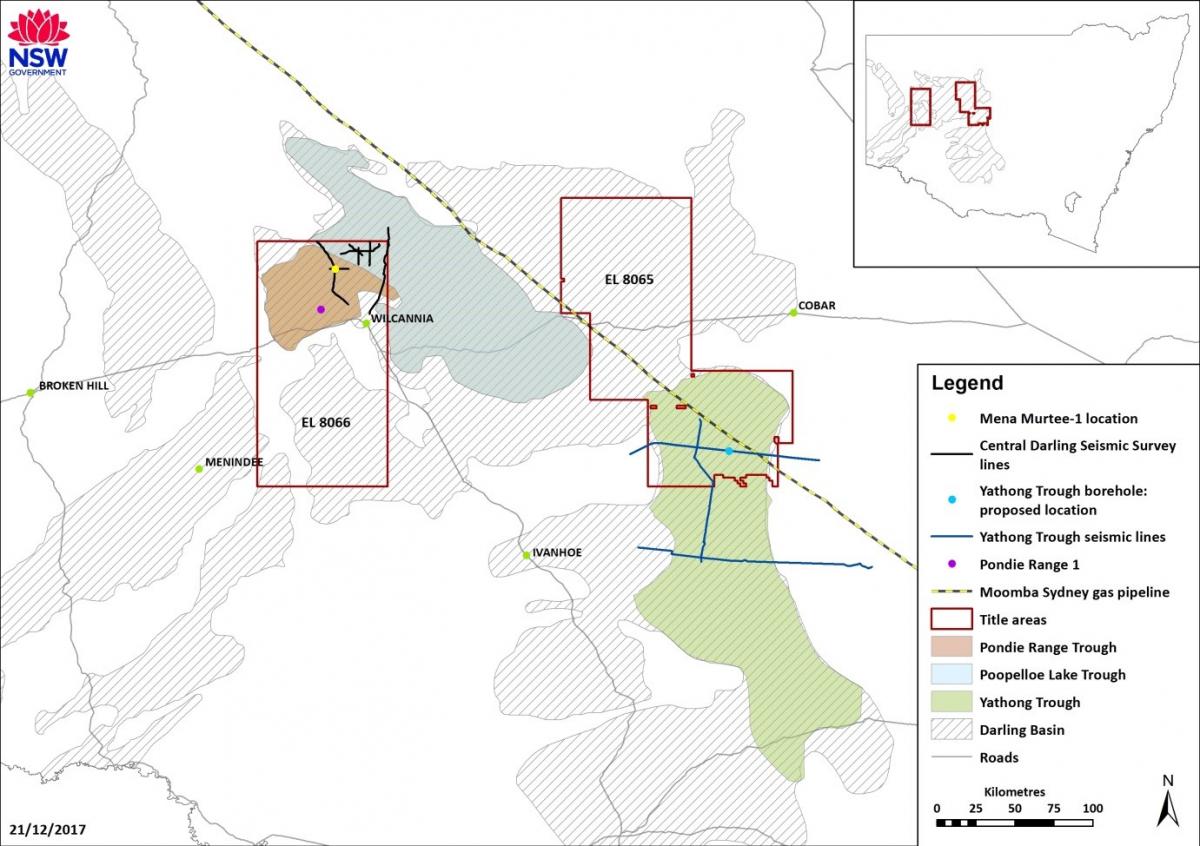NSW CO2 storage assessment program
The challenge:
To make NSW carbon dioxide (CO2) storage ready and quantify the CO2 storage potential in regional NSW. This work will help pave the way for emissions reductions while supporting industries and jobs in NSW. A carbon storage solution would also support new and emerging industries such as clean hydrogen production and direct air capture.
The action:
Coal Innovation NSW (CINSW) is coordinating the NSW CO2 Storage Assessment Project which aims to ‘make NSW CO2 storage ready’. To achieve this, CINSW is exploring regional NSW to identify safe and secure sites for potential geological storage of CO2.
The project:
Conventional Carbon Capture and Storage (CCS) sites permanently store CO2 in geological formations deep underground. Compared to most other states in Australia, NSW's deep sedimentary basins are virtually unexplored.
To address this knowledge gap, CINSW, through the NSW CO2 Storage Assessment Project, is undertaking a statewide assessment to identify potential storage opportunities in NSW.
Stage 1 explored two potential sites in NSW
The Carbon Storage Taskforce identified the Darling Basin and Sydney Basin as national priorities for exploration in 2009.
In Stage 1A, four stratigraphic wells were drilled in the Sydney Basin. Work was completed in 2012 and the wells showed limited CO2 storage potential, hence looking further west to the Darling Basin.
In Stage 1B, which commenced in 2014, two stratigraphic wells were drilled in the Darling Basin in western NSW, near Wilcannia. The Tiltagoonah-1 well is in the Nelyambo trough and the Mena Murtee-1 well is in the Pondie range trough.
Data from the Mena Murtee-1 well in the Pondie Range trough indicated a potential storage site. Analysis and modelling of this area identified multiple porous sandstone reservoirs with the potential to store 555 million tonnes of CO2. This is equivalent to all NSW industrial emissions (non-electricity) created over a forty-year period.
Stage 2 builds on previous exploration
For information on current Stage 2 activities click here (PDF, 277.42 KB).
The aim of Stage 2 of the NSW CO2 Storage Assessment Program is built on the early results from Stage 1B to strengthen understanding and expand current storage estimates of the Darling Basin.
Stage 2 concentrates on ‘proving up’ the Pondie Range Trough and neighbouring Poopelloe Lake Trough as suitable storage sites. Exploration is also focused in another promising sub-basin, the Yathong Trough, to expand our understanding of the storage prospectivity of the Darling Basin. This trough may also serve as an alternative storage option should further assessment of the Pondie Range Trough result in a downgrade in its prospectivity.
A comprehensive seismic survey and exploration drilling program has been developed to address key knowledge gaps in the geological structure, stratigraphy, reservoir and seal properties, and hydrogeology of the three targeted sub-basins. This will allow a robust assessment of storage viability to be undertaken.
Darling Basin drilling program
A combination of stratigraphic drilling and two-dimensional (2D) seismic surveys are used in the NSW CO2 Storage Assessment Program to obtain information on the suitability of sedimentary units for CO2 sequestration.
Seismic surveys are used to evaluate the well locations and provide a seismo-stratigraphic correlation tool that can be linked to drilling information to produce a more robust geological model of the area.
Stage 1B
Stage 1B drilling activities were undertaken in early 2014 with the aim of investigating the CO2 storage potential and geothermal potential within the Nelyambo (Tiltagoonah-1 well) and Pondie Range (Mena Murtee-1 well) troughs in the northern half of the Darling Basin.
Rather than comprehensively characterising each formation, a data acquisition program was designed for Stage 1B with the aim of providing data sufficient to support a pre-competitive assessment of the potential of each targeted geological formation to safely and securely store CO2.

Location of the Stage 1B wells, Darling Basin, central western NSW. The Group 8 Titles awarded to the NSW Department of Industry for the purposes of the Darling Basin Drilling Program are also shown (© NSW Dept. of Industry).
The substantial data and sample sets acquired from this exploration were sufficient to meet the needs of an initial geological interpretation of the near well lithology, which included the identification of reservoir/seal pairs as prospective intervals for CO2 geological storage.
Results
Results from Tiltagoonah-1 indicated that the sandstones intersected were heavily silicified and lacked porosity (i.e. tiny pore spaces within rocks required to hold/store injected CO2) and permeability (i.e. connection between the pore spaces to allow injected CO2 to flow from the injection point out into the storage reservoir), thereby rendering them unsuitable as a storage site for CO2.
In contrast, three sandstone units overlain by extensive claystone units were identified in Mena Murtee-1 as prospective storage reservoirs for CO2.
The existing offset well data along with seismic data and newly acquired data sets from Stage 1B exploration were used by collaborative researchers from the CO2CRC to undertake studies on the geological storage system characterisation, injection and plume migration modelling, geomechanical evaluation, and geochemical analysis and modelling. These studies provided positive indications for large scale storage of CO2 within the Darling Basin.
The prospective intervals encountered in Mena Murtee-1 were identified through low resolution injectivity and capacity modelling to have suitable porosity and permeability for CO2 storage. The computer modelling revealed that the porous sandstones may be capable of storing approximately 555 million tonnes of CO2. Theoretically, these sites could store up to 40-50 years of emissions captured from one large NSW coal-fired power station at an estimated low cost of between $21 and $23 per tonne.
A caveat is that this initial assessment of the Pondie Range Trough is based on limited exploration data, and hence holds a high degree of uncertainty. Additional exploration work is needed to confirm these initial results and also to identify other potentially suitable CO2 storage locations within the Darling Basin.
Stage 1B in the Darling Basin achieved its objective of investigating the CO2 storage potential and geothermal potential within the Nelyambo and Pondie Range troughs.
The discovery of prospective storage and seal units highlight the geosequestration potential of the Darling Basin and begin to confirm previous (limited data) Basin studies. An enhanced understanding of the geology of the basin has also been gained, and a large volume of subsurface data and drill core (114.39 m) were acquired. These have been made publicly available for continued assessment and study by government agencies, academia and industry. Concomitantly, key learnings were acquired that will assist in enhancing the outcomes of further exploration required to ascertain the storage potential of the Darling Basin.
For further information, the full CO2CRC Collaborative Research Report and the Final Report on Stage 1B – Darling Basin Drilling Program can be found on the DIGS (Digital Imaging of Geological Survey Reports) website.
Seeing is believing – Three-dimensional (3D) printed models of the porous sandstone
To assist in understanding the significance of the first discovery in NSW of a prospective CO2 storage reservoir in the Darling Basin, 3D printed models have been made of the porous sandstones extracted from the Pondie Range Trough (see image below). The printed models are enlarged replicates of a small plug (8 mm in diameter) of sandstone core from the Mena Murtee-1 well taken at a depth of 1,614 metres. They were produced from high resolution CT imaging of the plug.

On the left is the 3D model of the pore space (i.e. the voids between the rock grains) highlighting the actual connectivity between the rock pores that would facilitate the flow of fluids through the sandstone (NB. the connected rock pores are represented by the solid light-grey material that makes up the model). The model on the right shows the framework grains for the porous sandstone which is comprised primarily of quartz and several other minor mineral components.
Being able to visualise the pore space network highlights the attractive features of the prospective storage reservoir found in the Pondie Range Trough.
Stage 2
A second stage of exploration in the Darling Basin is currently underway to verify and build upon the promising Stage 1B results.
Stage 2 concentrates on further investigating the Pondie Range Trough and neighbouring Poopelloe Lake Trough as suitable storage sites. Exploration is also focused in another promising sub-basin, the Yathong Trough, as an alternative storage option should further assessment of the Pondie Range Trough result in a downgrade in its prospectivity.
To achieve these objectives a comprehensive seismic survey was completed, and exploration drilling strategy is being planned. Coupled with comprehensive analysis, modelling and interpretation of the new data, the exploration program will allow a robust assessment of storage viability to be undertaken.

The Darling Basin in central-western NSW depicting the areas to be targeted in Stage 2 of the NSW CO2 Storage Assessment Program.
Stage 2 of the NSW CO2 Storage Assessment Program has progressed in line with a developed work plan based on the:
- consolidation and synthesis of existing data,
- completion of a peer-reviewed seismic acquisition program to fill existing data gaps, and
- optimising exploration hole locations based on outcomes of recent seismic acquisition.
Landholder sentiment within the exploration areas remains good with stakeholder engagement continuing between CINSW staff and landholders. Communication and engagement with local community members and local councils is occurring as per the Community and Landholder Liaison Plan for the Program.